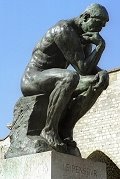PREFACE
IN one of his essays, Emerson tells us that "proverbs, like the sacred books of each nation, are the sanctuary of the intuitions," a statement which, if accepted, must place this class of literature on a very high footing. But, although due caution must be taken, when analysing proverbial lore, to differentiate between the serious and jocular element contained therein, it may safely be said that, taken as a whole, such adages and saws--which form an important branch of folk-lore--express more or less correctly the estimate of mankind relative to the subject specially handled. And, when it is remembered what a wealth of material proverbial literature supplies in connection with every concern of daily life, it is not surprising that woman should have been made a prominent theme for criticism and comment, the judgment passed on her being in most cases fairly evenly divided between what is in her favour or the reverse.In a field, too, so wide we have been content to cull, from here and there, sufficient typical instances of the proverbial wisdom of the human race in its teaching of woman's character as to illustrate the subjects classified in the following chapters, without unduly multiplying examples, which only too frequently are a repetition of the same adage told in a different form.
And, although at one time or another numerous volumes have been published on woman, no work similar to the present one has been attempted in this country, wherein we have endeavoured in a handy and concise form to classify under their subjective headings the proverbial sayings, folk-rhymes, superstitions, and traditionary lore associated with the fair sex. Some years ago, however, a valuable and interesting work was issued in Paris by Pierre Marie Quitard, entitled "Proverbes sur les femmes, l'amitlié l'amour, &c.," which contains much curious information, and the introductory chapter of Kelly's useful volume, "Proverbs of all Nations, Compared, Explained, and Illustrated," is devoted to women, love, and marriage. Among some of the works published in England on proverbial literature to which we are indebted are Christy's "Proverbs of All Ages" (2 vols., 1888), Denny's "Proverbs of Many Nations," William Stirling's "Essay towards a Collection of Books relating to Proverbs, &c." (1860), H. H. Vaughan's "Welsh Proverbs," Hislop's "Proverbs of Scotland" (1870), Macintosh's "Gaelic Proverbs" (1882), and Standing's "Anecdotes and Proverbs" (1891), besides the various works issued by the Folk-Lore Society, the several series of Notes and Queries--to the pages of which folk-lorists owe a deep debt of gratitude, information chronicled therein not to be found elsewhere--and a recent useful work on "Proverb Lore," by F. E. Hulme.
Among older works which deserve perusal may be noticed John Heywood's "Dialogue and Epigrams," which made its first appearance in 1546, and the famous work of John Ray, which was issued in 1670, and was incorporated by Mr. Bohn in his "Handbook of Proverbs," published in 1857. Herbert's "Outlandish Proverbs," printed in 1640, contains many curious and amusing sayings, and one section of Camden's "Remains," which first appeared in 1605, is devoted to a collection of proverbs.
Mr. Hazlitt, in his preface to his "English Proverbs and Proverbial Phrases" (1869), has made a valuable survey of the literature of proverb-lore in this country, and Dean Trench, in his introduction to his "Proverbs and their Lessons," alluding to "the immense number and variety of books bearing on the subject," truly remarks that most of these compilations "include matter which cannot fitly be placed before all, or they address themselves to the scholar alone; or, if not so, are at any rate inaccessible to the mere English reader; or they contain bare lists of proverbs, with no endeavour to compare, illustrate, or explain them--or, if they do seek to explain, they yet do it without attempting to sound the depths or measure the real significance of that which they attempt to unfold." For the same reason we have been obliged to omit a very large number of proverbs as unsuitable for the general reader, although, unfortunately, very many of these old adages are witty and amusing, but their coarseness renders hem out of place in a work of the present kind.
Many valuable works illustrative of foreign proverb-lore have appeared at intervals, and, in addition to those connected with France already quoted, may be noticed "Les Proverbes de la langue francaise," par D. Loubens (1889), A. Mariette's "French and English Proverbs" (1896-7), G. Belcour's "Selection of French Proverbs," and M. de Lincy's "French Collection of Proverbs," published in two volumes in 1880.
Much that is interesting in connection with womankind will be found in J. Barten's "Collection of English and German Proverbs" (1890), and in J. Muddlemore's "Proverbs in Various Languages" (1889); and an old work which deserves notice is Torriano's "Italian Proverbs," published as far back as 1666. It may be added that a large number of publications on proverb-lore which illustrate our subject have been published abroad, many of which, although not easily accessible elsewhere, may be seen at the British Museum; and amongst some of the works to which we are indebted may be mentioned J. R. Jewett's "Arabic Proverbs" (1891), being the fifteenth volume of the American Oriental Society, S. W. Fallon's "Hindustani Proverbs" (1880), P. R. T. Gurdon's "Assamese Proverbs" (1896), G. Bayan's "Armenian Proverbs" (1889), and an interesting little volume on "Kashmiri Proverbs," by J. H. Knowles, which was published at Bombay in 1885.
In 1890 there was issued at Colombo a good collection of Sinhalese and European proverbs by N. Mendis, and in 1897 Mr. H. Jensen produced his "Tamil Proverbs," which contains much that has its counterpart in our own proverbial lore relating to woman; while Mr. W. F. Johnson's "Hindi Proverbs" (1886) further largely adds to the estimate formed of the fair sex.
Mr. A. H. Smith's "Chinese Proverbs" is excellent as far as it goes, and Mr. Pfoundes, in his "Notes," has collected many of the Japanese proverbs. Herr Knobloch, too, in the "Transactions of the German Society of Japan," has done much in this direction, whilst Sir Edward J. Reed's important work on Japan: its History, Traditions, and Religions (1880, 2 VOLS.) has devoted a chapter to the proverbs and proverbial sayings current among the Japanese people, in many of which he says, "there is in the original a play upon words which cannot be translated, but which sharpens the point of the phrase to the native"--a remark, however, which applies to most translations of foreign proverbs. When we turn to Japanese wisdom relative to woman's beauty, we find much the same advice given as is found amongst Western nations, one of their popular admonitions reminding us that "the heart is better than a beautiful face"--In other words, it is far better for a woman to have a good heart than to have a beautiful face; and the danger that often lurks behind a pretty face has been incorporated into many of their proverbs, one of which runs thus: "Beware of beautiful women as you would of red pepper"; and, it may be added, even the Japanese have long ago commented in their proverbial lore on woman's loquacity, one of their household maxims reaffirming what, under one form or another, seems to be universally acknowledged--that "a woman's tongue three inches long can kill a man six feet high."
Among some of the other works to which we have been more or less indebted in the succeeding pages may be mentioned the following: J. Christian's "Behar Proverbs"; A. Manwaring's "Marathi Proverbs"; "Telugu Proverbs," by Narasimha Acharyulu; "Sindhi Proverbs," by Rochiram Gajumal; "English Proverbs, with Urdu Equivalents," by Wazir Ahmad; "Osmanli Proverbs," by Ahmad Midhat (1898); and W. E. Taylor's "African Aphorisms" (1891).


















































